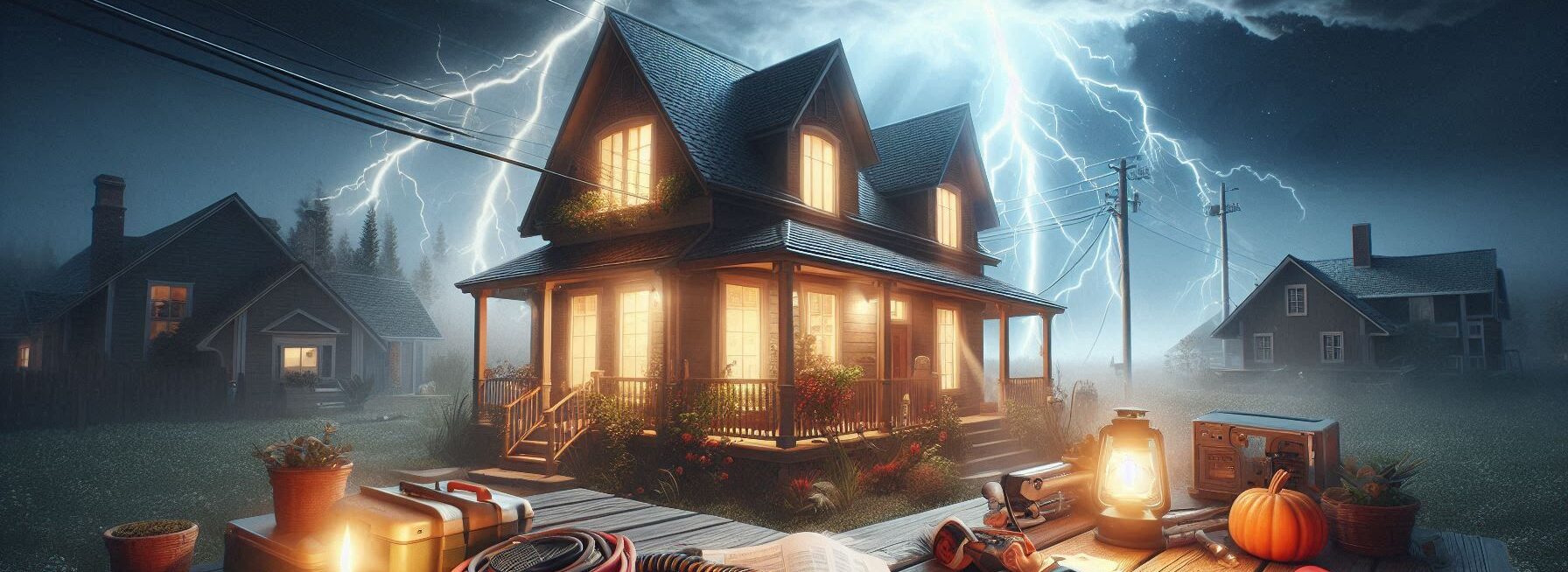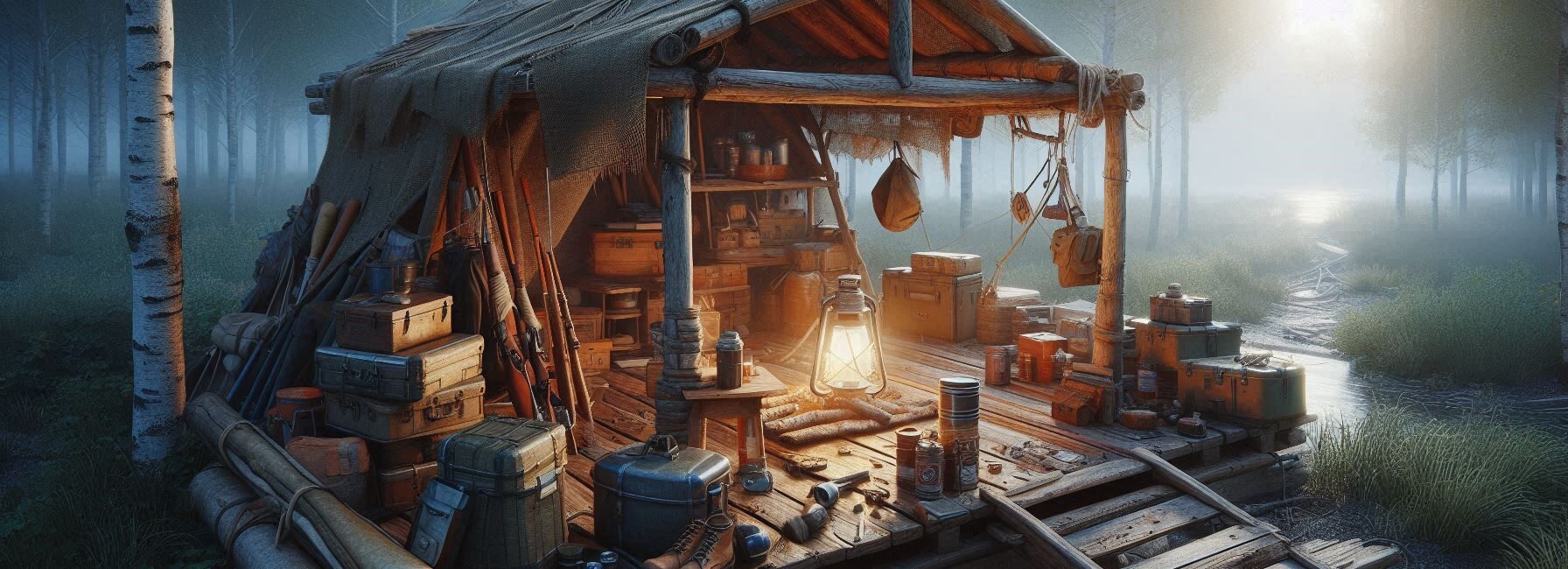Please Note: This post may contain affiliate links. If you click one of them, we may receive a commission at no extra cost to you. As an Amazon Associate, I earn from qualifying purchases.
Last Updated on October 19, 2025 by Kevin Collier
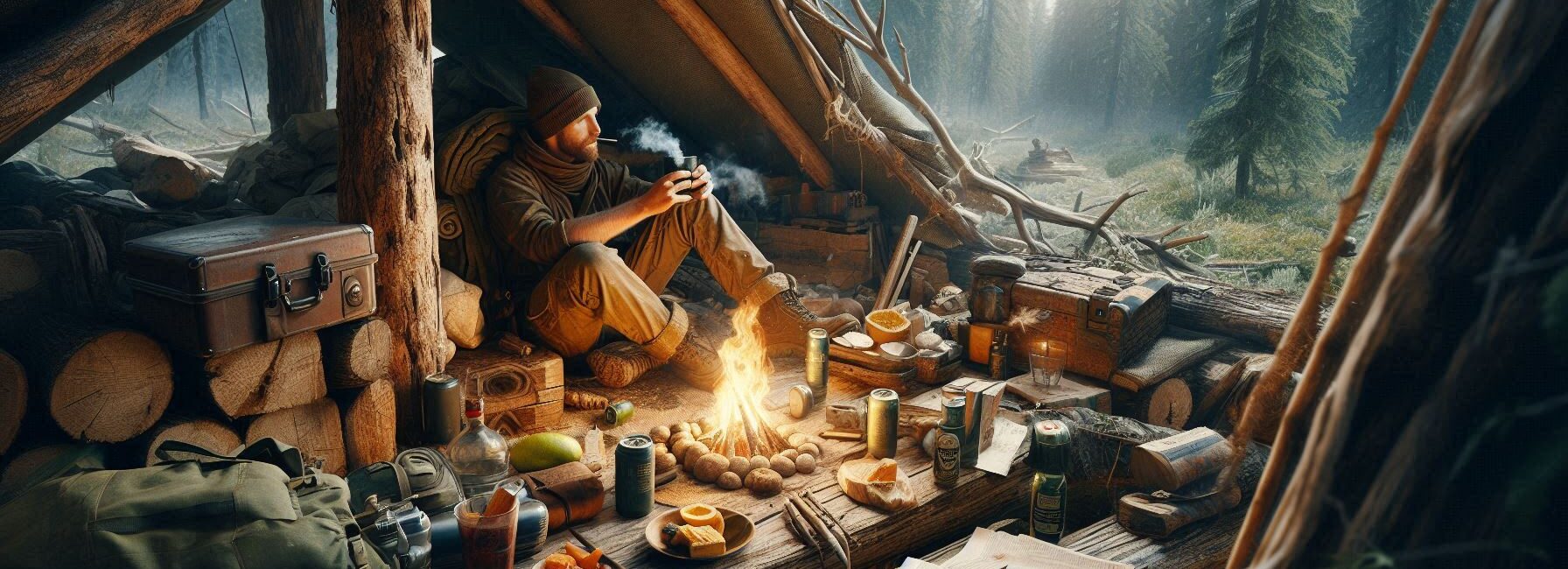
Top Takeaways and Key Concepts
- Stay Calm and Assess: Recognize immediate dangers and prioritize actions.
- Signal for Help: Use three short signals to indicate distress.
- Find or Build Shelter: Use natural materials or debris to protect against elements.
- Locate Water Sources: Follow streams or look for signs of water.
- Conserve Energy: Rest during the day and move cautiously at night.
Picture this: you're all cozy at home, maybe eating popcorn or some leftovers you don't know what to do with. The couch is comfortable, and everything appears perfect. Then—boom! The ground shakes. Is it an earthquake? A flood? Or maybe aliens have finally come to take us?
No matter what happens, you're suddenly out in the wild. You look around, and the couch isn't so comfy anymore. There are trees, dirt, and maybe even a squirrel that looks too interested. People start to panic. Your heart beats faster. But take a big breath. You can do it!
Find a safe place to start. Find a huge rock or a tree. It will assist you stay away from branches that are falling or water that is flowing. You want to find some shelter. The globe is a large place, and your new “home” is a lot tougher than your living room.
Next, consider about what to eat. What might you eat out here? Be careful while you look for berries or nuts. Some of them are not safe. You don't want to eat something that will hurt your stomach. It's like playing a game when you truly want to win.
Also, water is very crucial. You might want to drink from a stream if you see one. But first, make sure it appears clean. Clear is good. Not clear? Not that much, maybe. It's like deciding between the salad and the leftover pizza. You get what I mean?
The most important thing is to stay calm. Let it out if you start to feel terrified. Talk to yourself or sing a funny song. Do you remember how we used to giggle over coffee? You can also do that in the wild. It will make you feel better.
It's a small win when you find a way to stay warm and dry. You may start a fire or use extra garments as a blanket. You're starting to get the hang of this crazy life!
All of the things you're learning right now are making your adventure skills even better. You could tell your buddies about it again over munchies, like popcorn or, hmm, not-so-great leftovers.
You will know a little more the next time you watch those dumb reality shows. You'll know you can make it out there. And if aliens ever come to your door, at least you won't be sitting on your couch!
*** Shop for Survival Gear - Tools - Kits ***
Survival Gear - Bags and Backpacks - Knives - Boots/Footwear - Communication
Outdoor Cooking - Gloves - Hydration - Dry Boxes - Water Filtration Systems
Tents - Sleeping Bags - First Aid Kits - Multi-Tools - Flashlights - Fire Starters
Navigation - Survival Food - Night Vision - Headlamps - Stun Guns - Binoculars
Assessing Your Situation: The Calm Before the Chaos

First things first: take a deep breath. I know it sounds cliché, but panicking is about as useful as trying to breathe underwater. You need to assess your surroundings and figure out what just happened. Are there any immediate dangers lurking around? Is that rustling sound coming from a cute little squirrel or something much more terrifying?
By the way, if you're lucky enough to have survived without injury, consider yourself ahead of the game! Take stock of your situation. Look for landmarks or signs of civilization—anything from distant smoke signals (not from cooking marshmallows) to hearing voices in the distance could be key indicators.
Let’s see…you’ll also want to check for supplies. Do you have access to food or water? If not, don’t worry; we’ll cover that soon enough! Just remember: staying calm will help clear your mind so you can make better decisions moving forward.
Finding Water: The Essence of Life
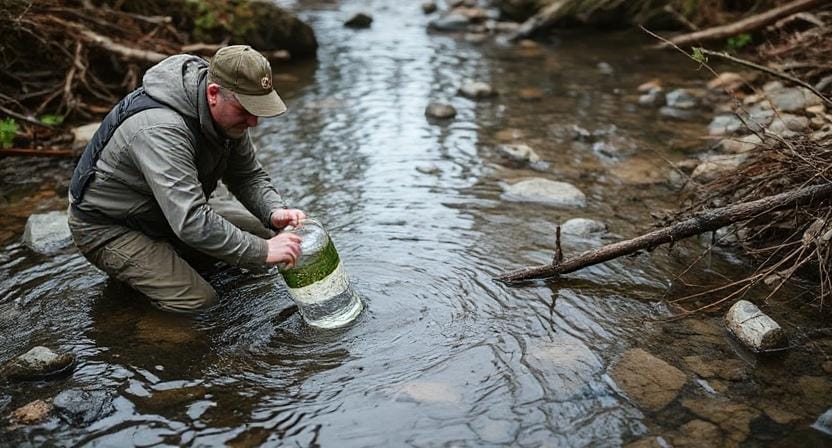
Now let’s tackle one of life’s most critical questions: where on Earth are we going to find water? It’s not like there’s a “water fountain” sign pointing us toward hydration heaven. Interestingly enough, nature has its own ways of providing—you just have to know where to look.
If you're near streams or rivers (and they aren’t boiling lava), congratulations! You're already ahead of many survivalists who might be wandering aimlessly through shrubbery while contemplating their life choices.
However, remember that even flowing water can harbor bacteria or parasites—so it's best practice to purify it before drinking.
You can boil water if you've got something handy—or use purification tablets if you've stashed them away somewhere sensible (like next year’s holiday decorations).
And hey, did you know rainwater is typically safe? If clouds start rolling in like they mean business and you're without gear—grab whatever container is nearby and prepare for nature's free refill!
Building Shelter: Home Sweet Temporary Home

Now that we've secured our hydration needs (cheers!), let’s talk shelter because sleeping under the stars sounds romantic until bugs start using your face as their personal landing pad. Ideally, you'll want something sturdy and weather-resistant—but let's be real; anything is better than lying exposed like an overcooked hot dog.
When choosing a location for shelter construction, look for high ground away from potential flooding zones (remember those streams?).
Trees provide excellent cover from wind and rain too! Speaking of trees—if they're leaning ominously over your chosen spot like they're auditioning for “America's Next Top Model,” consider moving elsewhere before they decide it’s time for dramatic effects.
To build your shelter quickly using branches or logs around you—think lean-to style! Lean them against strong trees or create walls using fallen debris found nearby. And don't forget some leafy material on top as insulation; nobody wants a cold shower when all they wanted was sweet dreams!
Foraging for Food: What Can I Eat?
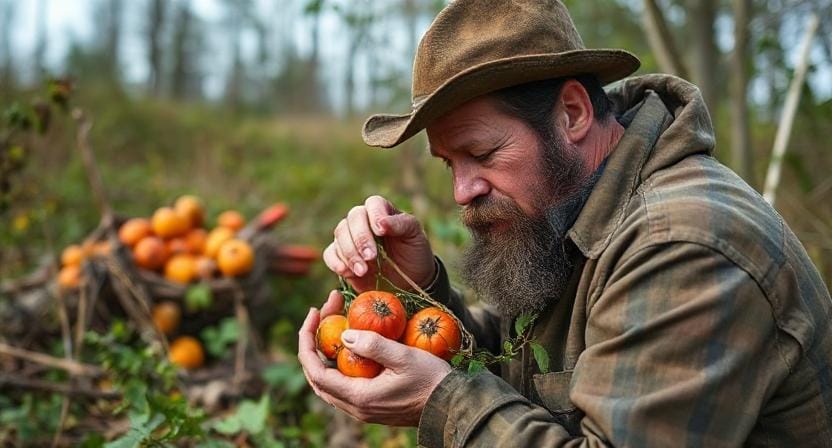
Alright folks—we’ve covered water and shelter; now it's time for everyone's favorite topic: food! Let me tell ya—the wilderness isn’t exactly known for its five-star dining options unless you're really into berries and nuts.
First off, familiarize yourself with edible plants in your area before disaster strikes—it helps avoid unwanted surprises later on! Some common edible plants include dandelions (yes, those pesky weeds), clover leaves, and wild berries—just make sure they aren’t poisonous because nobody wants an impromptu trip to “the other side.”
Speaking of food sources…insects are protein-packed snacks waiting right outside your door (or tent). Crickets may not sound appealing now but think about how great they'll taste when hunger kicks in like an uninvited guest crashing your party!
And if nothing else works, a good old-fashioned fishing trip could also bring in some tasty food! Find some bait, like a worm, and try casting out into local lakes or streams. Just remember to wear sunscreen unless being sunburned is part of your survival plan!
How to Stay Safe: Stay Away from Dangerous Situations
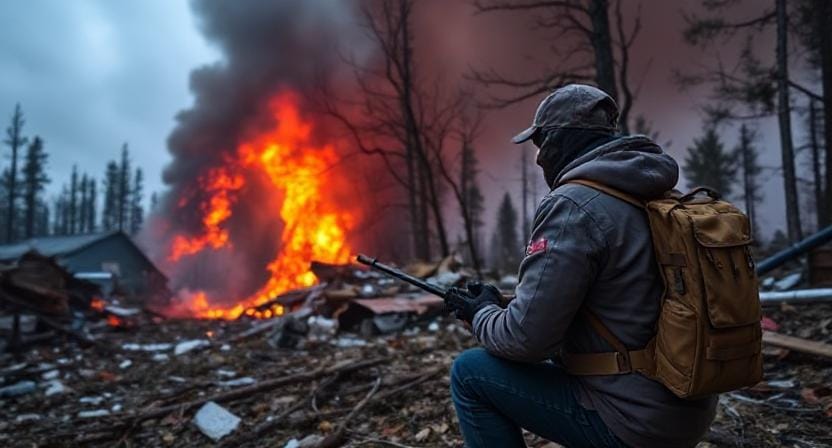
Safety should always come first when going into the wilderness after a disaster. Not only are there natural dangers, but there are also wild animals that could be harmful at any time. To be honest, though, there's nothing like seeing an enraged bear and trying not to scream louder than my pulse racing!
When you go through wooded regions, make noise. Animals usually don't want to be around people, but if you do, they will. This brings us back to running marathons through forests at full speed!
Also, marking trails with pebbles and sticks will help you keep track of where you're heading so that being lost doesn't add another layer to this fun mess called survival mode!
How to Get Help: How to Get Saved Like a Pro
Finally, one of the most important things to know about surviving alone is how to NOT STAY ALONE FOREVER! After looking at everything else, making signs can help rescuers find YOU right away instead than having to search aimlessly across large areas, hoping that someone else also decided today would be fun but hectic!
Fire can be a good way to warn trouble at night, and reflecting objects like mirrors flash brilliantly in the sun, which could also draw the notice of planes passing overhead. Even waving bright-colored clothes could get people's attention!
And let's not forget about old-fashioned ways that use whistles, which travel farther than just yelling. When combined with other visual cues, like spelling out “SOS” with sticks, dirt, or anything else that comes to hand, it works better than yelling “HELP” over and over until you're too tired to do it anymore!
Suggested Resources:
Survival Tips & Tricks
https://www.survivaltips.com
Wilderness Survival Guide
https://www.wilderness-survival-guide.com
Edible Wild Plants
https://www.ediblewildplants.com
Basic First Aid Skills
https://www.basicfirstaid.com
Emergency Preparedness Planning
https://www.emergencypreparedness.org

Kevin Collier is a seasoned survivalist and expert in prepping and homesteading, contributing to WiseSurvive.com. With a deep-rooted passion for self-sufficiency and outdoor survival skills, Kevin shares practical advice, strategies, and resources to help individuals prepare for any challenge. His informative articles cover a range of topics, from essential survival techniques to sustainable living practices, empowering readers to thrive in any situation. Whether you're a novice or a seasoned prepper, Kevin's insights will inspire you to take charge of your readiness and build resilience for the future.

